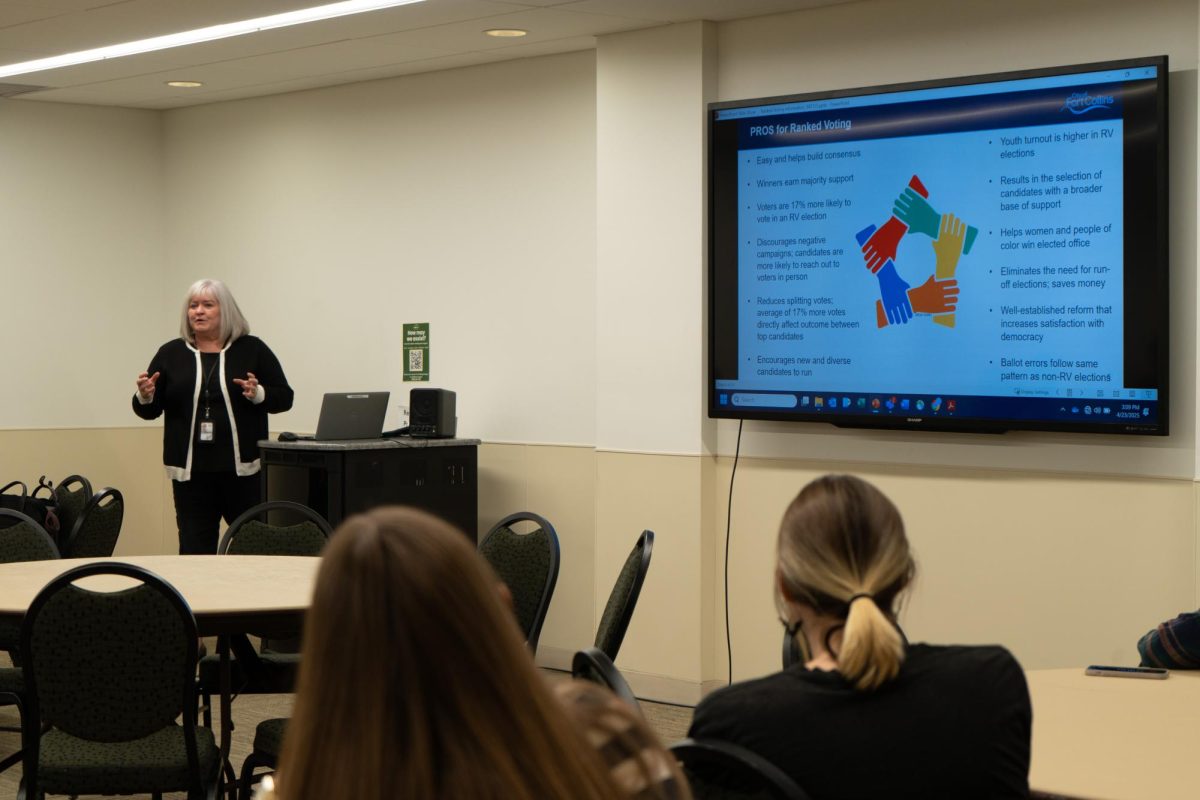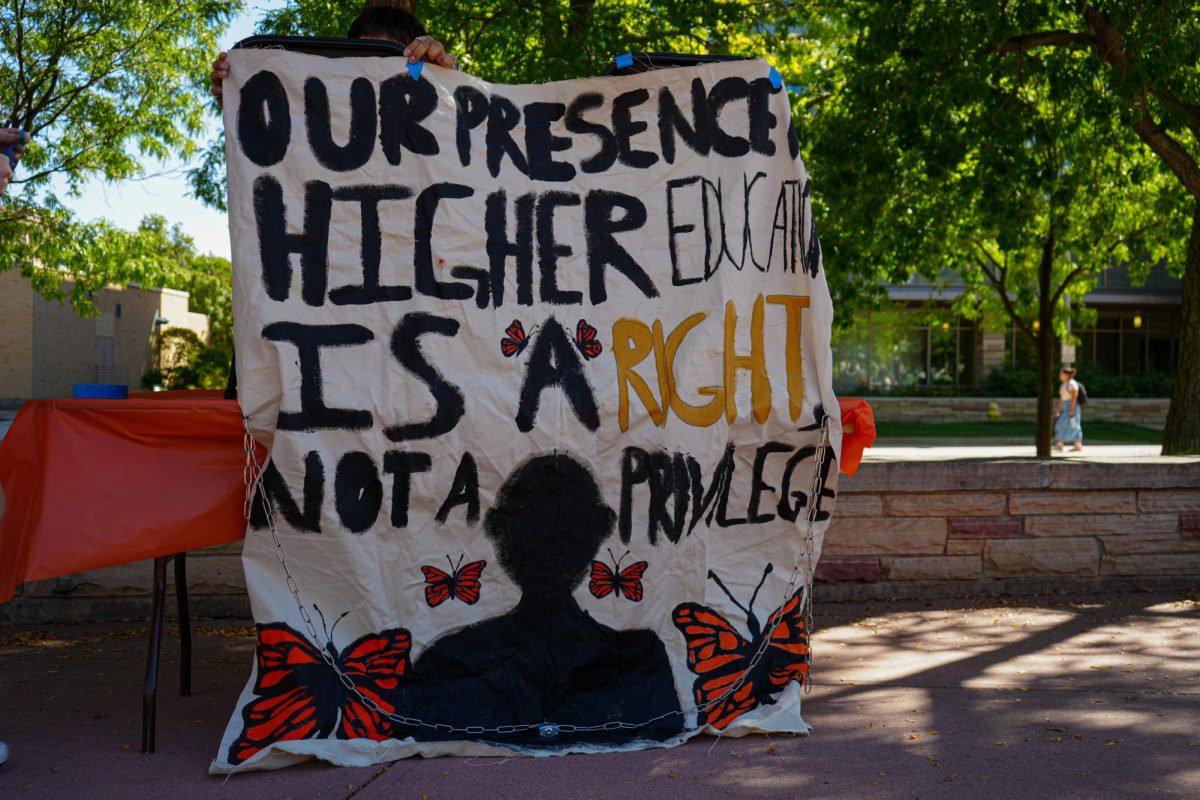
Nearly 50% of public schools in the United States have a School Resource Officer, which refers to a uniformed law enforcement officer in their buildings, according to the National Center for Education Statistics
Although SRO programs exist widely across the U.S., program operations can differ significantly across schools as there are few to no binding specifications at the state or national level.
In light of the Fort Collins campaign to remove SROs from Poudre School District, we break down the basics of what the SRO program looks like in Larimer County.
By the numbers: SROs in PSD
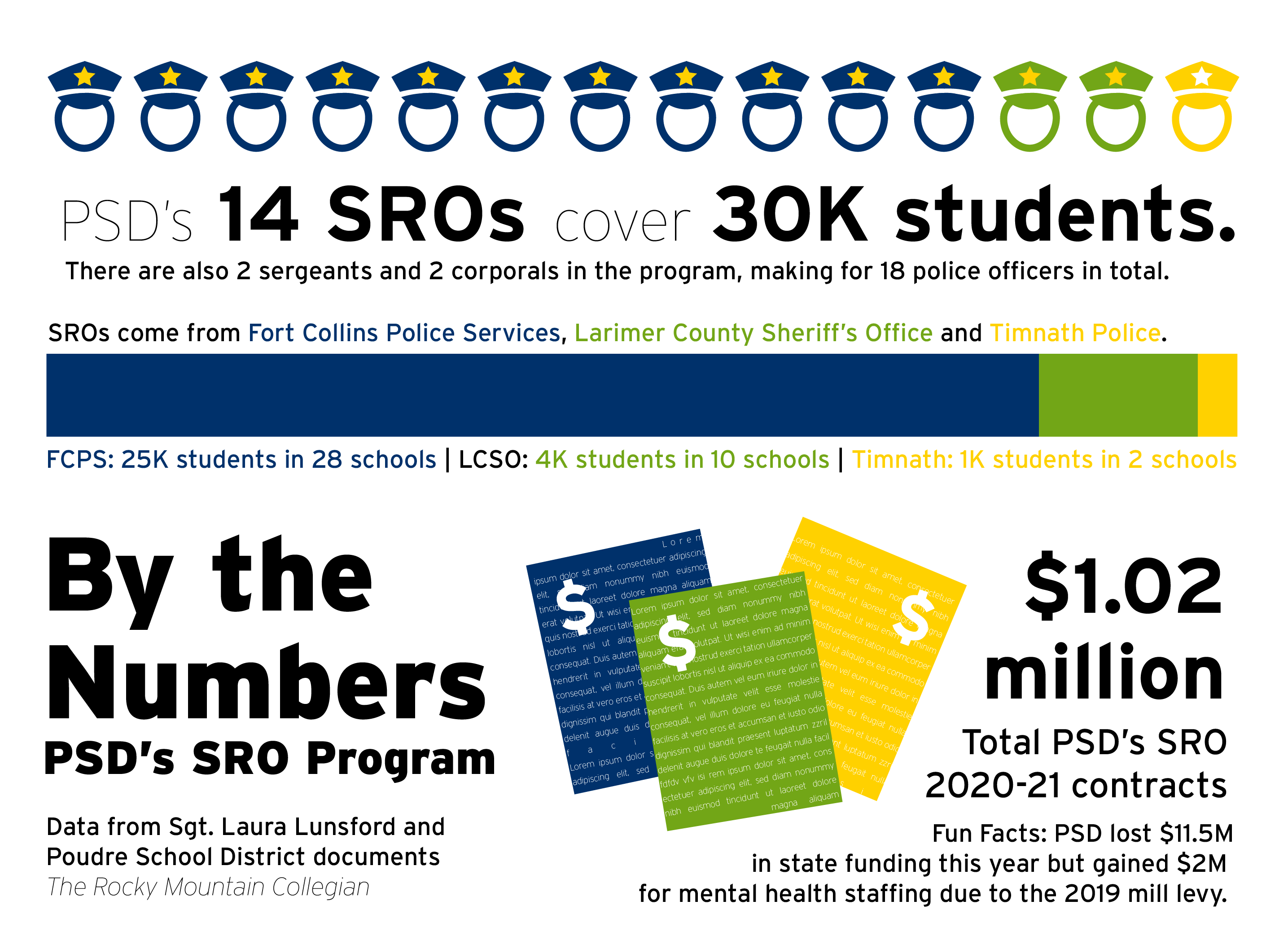
In PSD, 11 SROs, one sergeant and two corporals oversee 50 schools, covering 30,000 students. The officers are physically present in traditional middle and high schools.
The bulk of the program is handled by Fort Collins Police Services, though PSD also contracts from the Timnath Police Department and Larimer County Sheriff’s Offices. Combined, PSD’s 2020-2021 contracts were worth about $1.03 million.
During the first half of the pandemic, PSD kept on seven officers. Partway into the fall semester, the full 14 returned while students were in hybrid learning, according to PSD communications.
SRO duties remained essentially the same during PSD’s hybrid model that had half the students present on alternating days.
All SROs are sworn-in law enforcement officers who choose to be assigned to the SRO positions, said Sgt. Laura Lunsford, FCPS supervisor of the SRO program. Lunsford said they receive a 40-hour training from the National Association of School Resource Officers and training on specific topics like mental health response, racial bias and equity and juvenile sex assault and sex trafficking.
“We are dealing uniquely with kids … from 18 and in the high school level all the way down to elementary kiddos, and they all fundamentally work at different levels,” Lunsford said in a community information video. “So we need to make sure that we are matching their needs at their level and where they are.”
What SROs respond to in PSD
SROs responded to over 1,400 calls during the fall semester, including Safe2Tell tips and 911 dispatchers, but the majority came from PSD staff.
“When they’re asking for our help as a staff, it’s usually because they’re either outside of their bounds of expertise or they don’t feel safe,” Lunsford said.
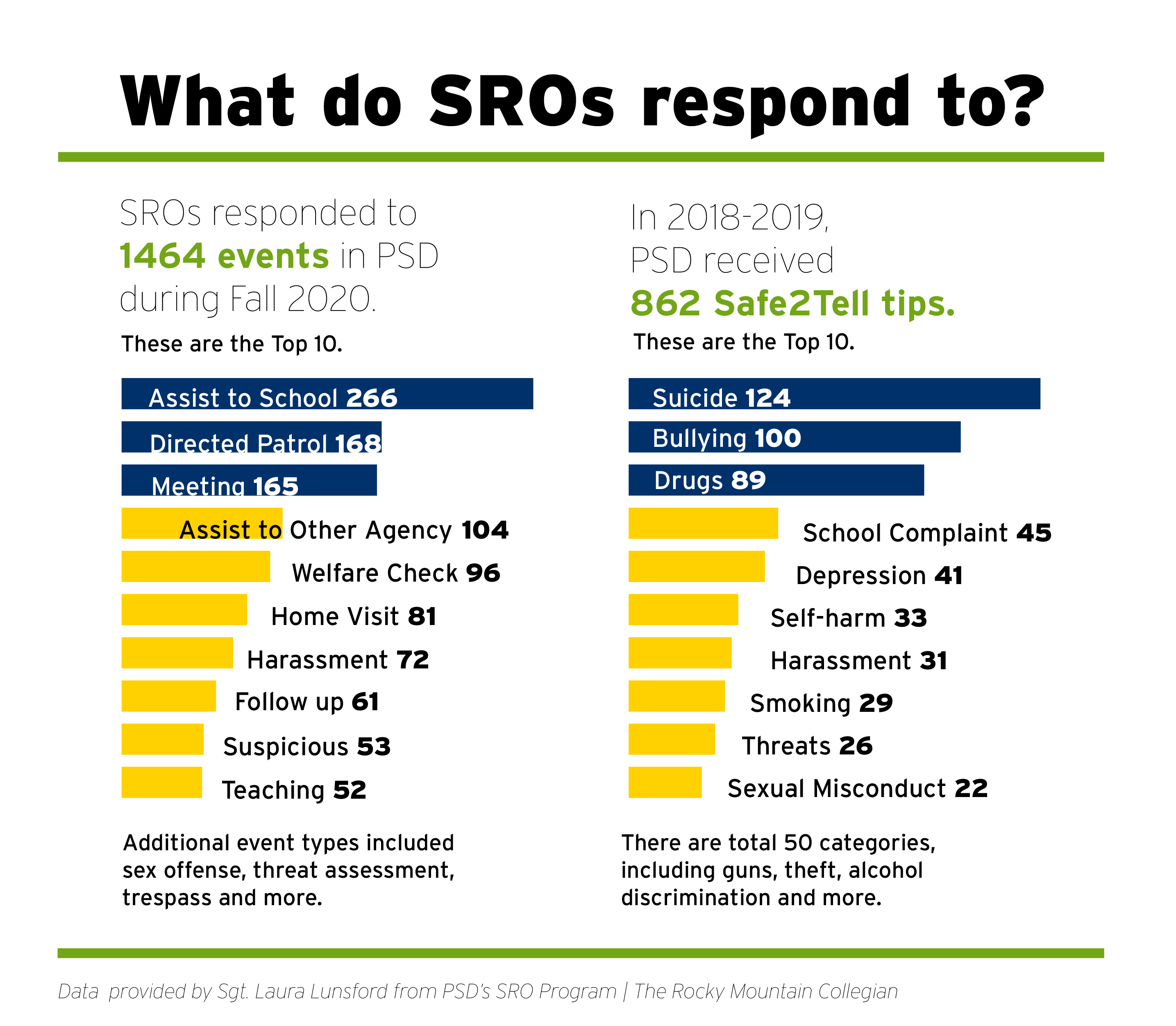
Of the 1,400 calls they received last semester, only 12 resulted in citations, Lunsford said. The year before had 251 incidents ending in citations, almost half of which involved a victim and thus police were required to respond to them by law — for example, assault and sexual offenses.
When considering removing SROs from schools, Lunsford emphasized that police will still have to respond to such cases when called.
“The difference is SROs know these kids, and they’re specially trained to deal with issues that they may be confronted with when they get there versus a patrol officer who doesn’t know the kid, … their family history, doesn’t know perhaps the trauma that they have experienced,” Lunsford said.
Discipline and incidents in PSD
In their campaign to end the SRO program, School Justice PSD has focused on the disparate policing impacts on students based on race and disability as well as varied levels of disciplinary measures as studied by researchers.
School Justice PSD organizers have often brought up the school-to-prison pipeline, “a process of criminalizing youth that is carried out by disciplinary policies and practices within schools that put students into contact with law enforcement,” as defined by sociologist Nicki Lisa Cole.
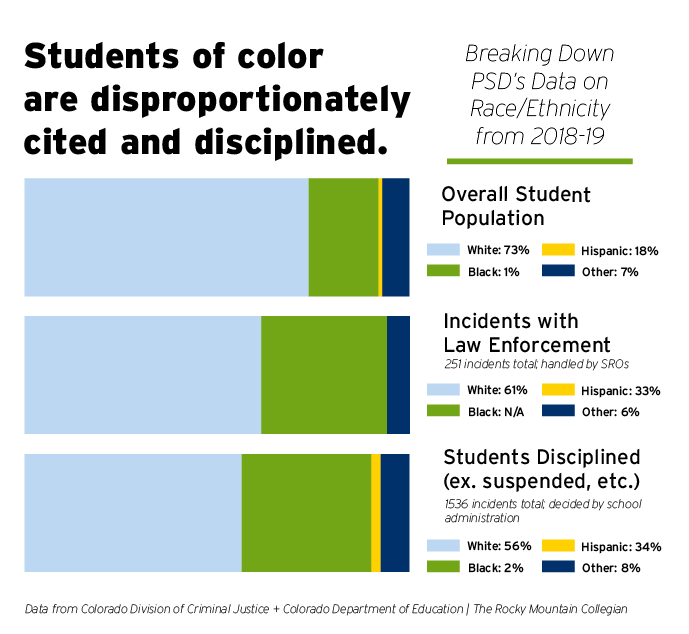
“When I first started getting juvenile clients, they were young people who … had ended up in the juvenile justice system, and the way that they got there was nearly always through a school resource officer,” said Kim Medina, a Fort Collins immigration attorney in a School Justice PSD informational video.
Nationwide, the criminalization problem inordinately harms minority students, especially Black students.
“Data does not show us that children of color cause more problems; the data shows us that when there are issues, children of color are treated differently,” Medina said.
Districts share disciplinary data with the Colorado Department of Education and incident data with the Colorado Division of Criminal Justice.
Based on PSD’s aggregate data, Hispanic students in particular are disproportionately disciplined — suspensions and expulsions decided by administration — and make up more of the incidents with law enforcement — resulted in arrest, summons or ticket, handled by SROs.
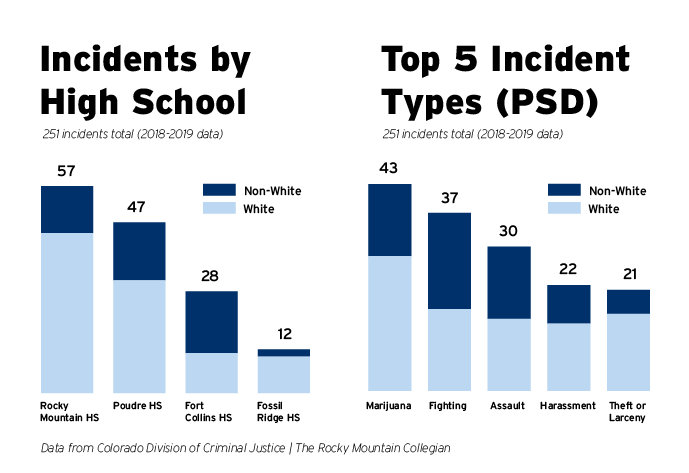
For SRO citations, the data breaks down differently at the individual school level since there are only a few dozen incidents at most per school. Some students were cited multiple times within the total reported incidents.
On the topic of punitive actions, Lunsford said that officers want to “interrupt” a student’s concerning behavior before they have to face more severe consequences as an adult. She also pointed to the “really robust programs” for diversion and restorative justice that the City and courts have in conjunction with law enforcement.
2020 changes to the SRO program
The conversations that started last summer and are ongoing have led FCPS to reevaluate aspects of their SRO program, FCPS Chief Jeff Swoboda said in a community meeting.
“We looked at what we were doing and said, ‘You know what? While well-intentioned, police officers maybe don’t need to be involved in (certain cases),’” Swoboda said.
Lunsford referred to crimes like underage drinking or marijuana use — which is consistently among the most cited case-type in the district — that can be more directly handled by the school.
“I’m not sure that we need to be the first line of interaction with that student based on those behaviors,” Lunsford said.
It’s disheartening because we’re there thinking we’re doing the right thing. But it doesn’t mean we can’t do it better, and it doesn’t mean we shouldn’t be having this conversation to do it better.” –Laura Lunsford, FCPS supervisor of the SRO program
PSD, in partnership with law enforcement, also made new Standard Operating Procedures last fall to clearly describe what SROs are supposed to do and when they should be involved. Some items clearly relate to problems School Justice PSD has brought up.
For example, SROs being present when administrators question students has, in cases, led to police being able to use a student’s statements in bringing charges against them without having to read the student their Miranda rights. The SOP explicitly states that should not happen in section 7D.
The hope for the SOP is to guide schools toward a more proper and consistent use of SROs, since PSD gave individual administrations wide discretion on how to use their officers.
Additionally, SROs are now keeping track of all their school encounters, when before, only ones that ended in a citation were documented. New data will include who calls the SROs and why as well as what alternative encounter outcomes look like.
While none of the data is publicly available yet, the intent of it is to tell a more complete story about the SRO program.
Though PSD’s program is designed locally, it is also part of the broader, national conversation on rethinking the role of policing and priorities of spending, members of School Justice PSD have said.
Analysis of program data, along with SRO duties and community comments, will be critical to the school board’s decision in late spring on whether to renew the SRO contracts for the next school year.
“It’s disheartening because we’re there thinking we’re doing the right thing,” Lunsford said of some of the questioning they’ve received. “But it doesn’t mean we can’t do it better. And it doesn’t mean we shouldn’t be having this conversation to do it better. At the end of the day, you’re trying to do what’s best for that juvenile.”
Read more about the upcoming board vote and the School Justice PSD campaign.
Samantha Ye can be reached at news@collegian.com or on Twitter @samxye4.


